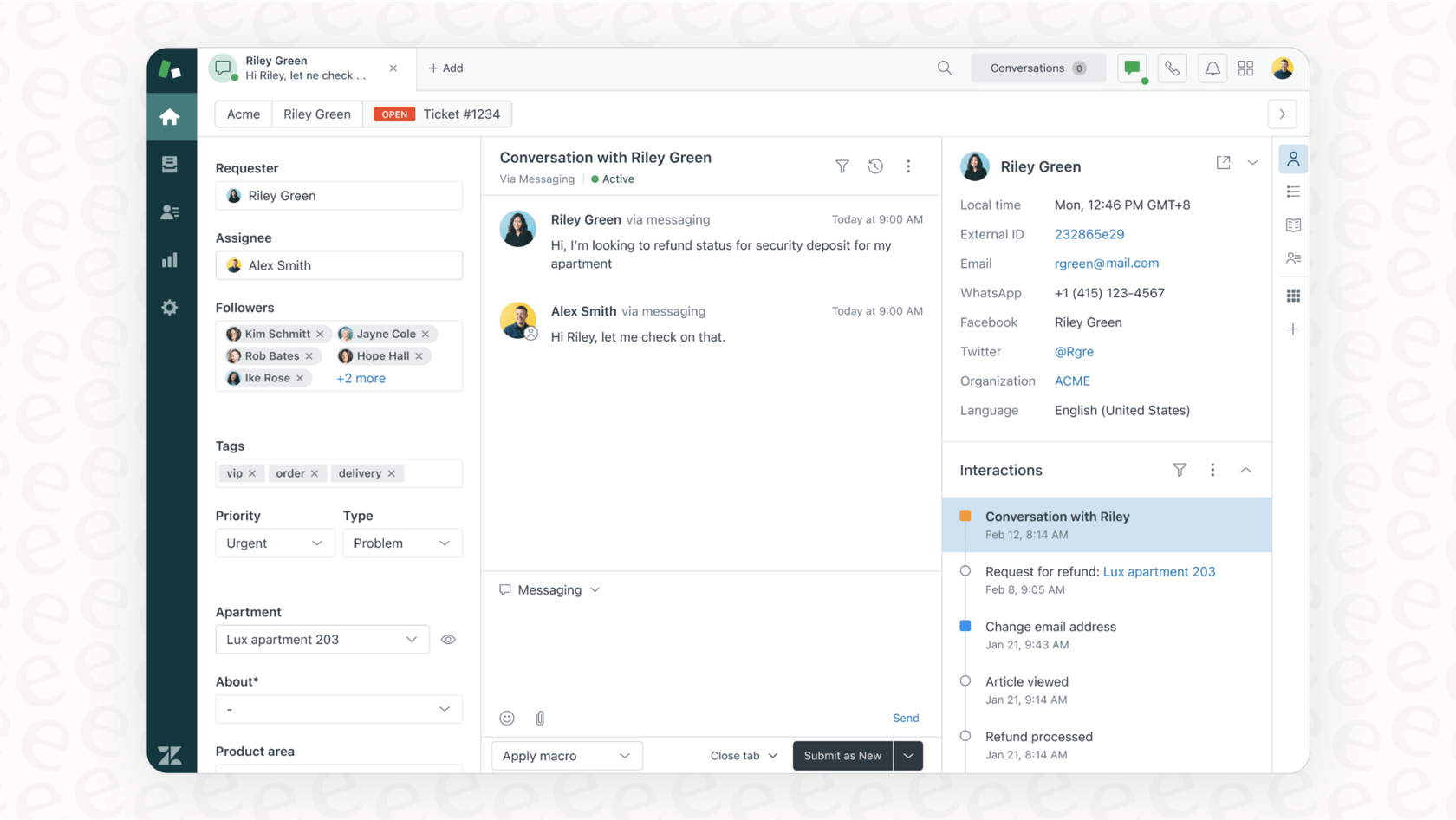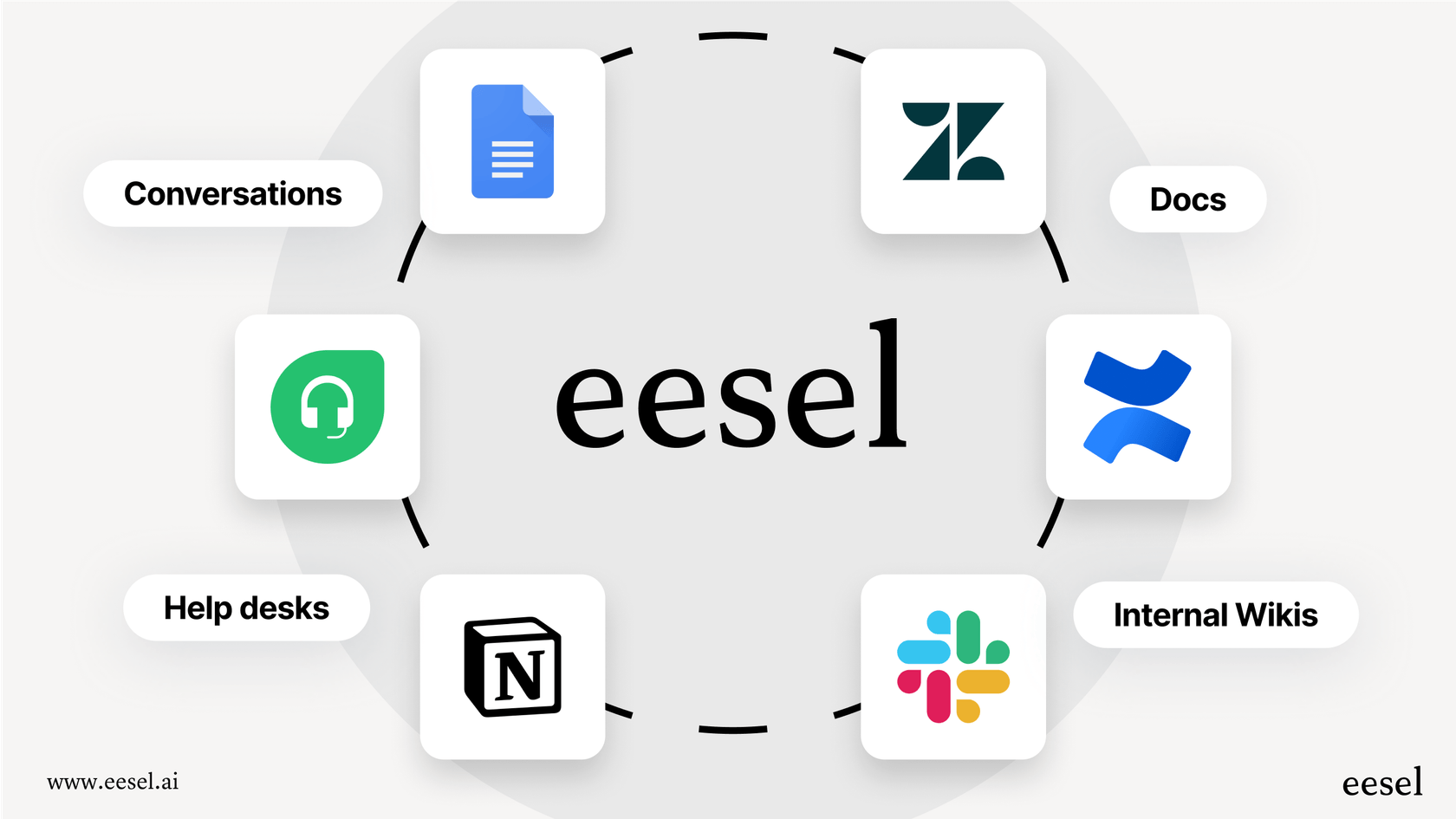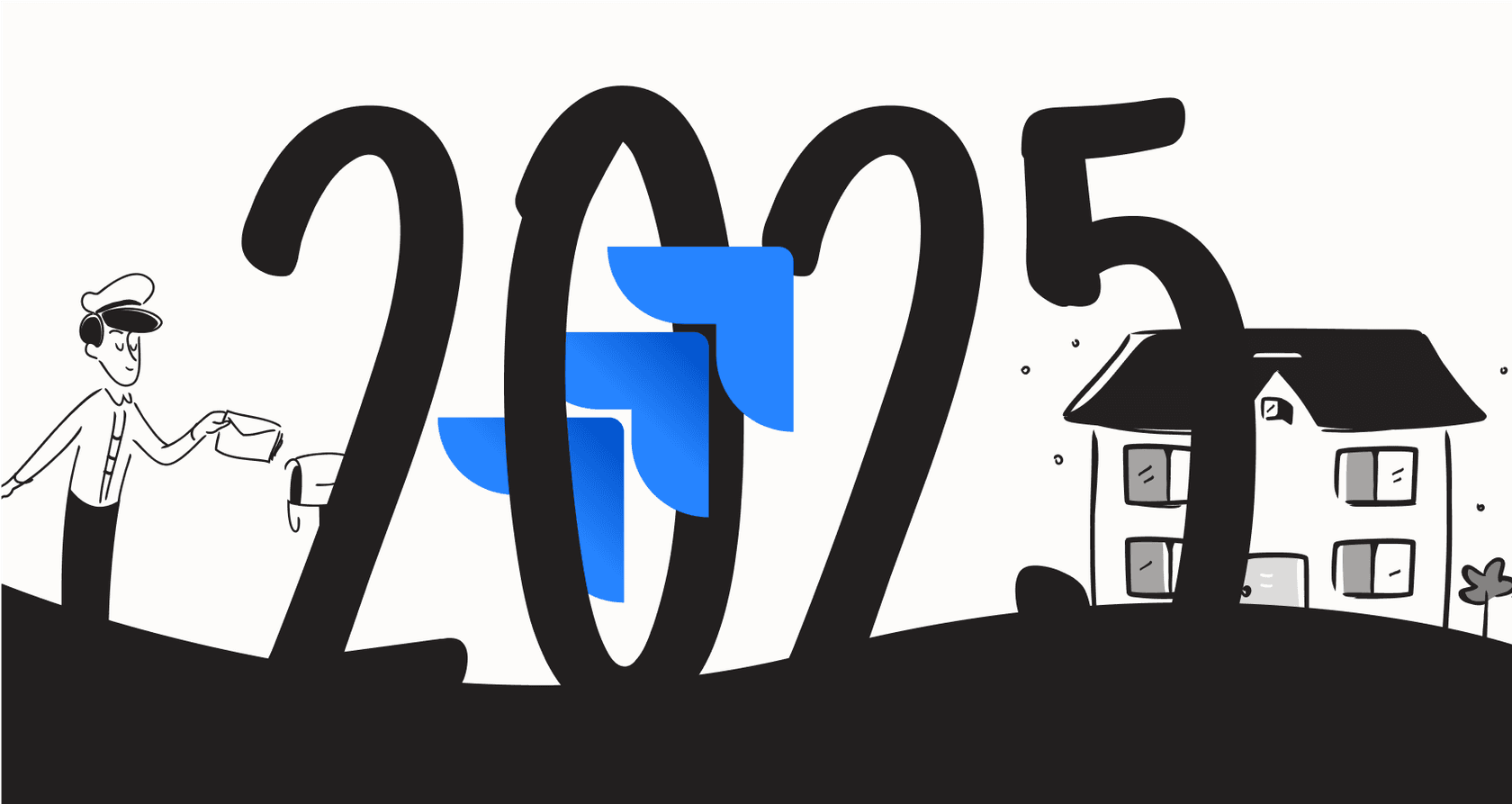
We’ve all seen it happen. A customer reports a bug. Your support team logs the ticket in your helpdesk, maybe it’s Zendesk. But to get the bug fixed, they have to loop in the engineering team, who live and breathe in Jira Service Management.
Suddenly, that single, simple ticket becomes a mess of copy-pasted notes, endless requests for status updates, and frantic back-channel Slack messages. This little bit of friction causes delays, frustrates both your teams, and, worst of all, leaves the customer waiting.
Choosing between a tool built for customer experience (CX) and one designed for IT service management (ITSM) is a classic headache for growing companies. This guide is an in-depth comparison of Jira Service Management vs Zendesk, breaking down their features, AI smarts, and pricing to help you decide which one fits your team.
But here’s a thought: what if you didn’t have to choose? What if you could make the tools you already have work better together, instead of ripping everything out and starting from scratch? Let's get into it.
What is Jira Service Management?
Think of Jira Service Management (JSM) as Atlassian's heavy-hitter for service desks. It’s built on the same foundation as the Jira platform that developers know and love. It’s designed mainly for internal teams like IT, DevOps, HR, and legal who need a structured, process-driven way to handle requests.
JSM's real power comes from its tight integration with the rest of the Atlassian world, like Jira Software and Confluence, and its robust, ITIL-aligned features. If you need to manage incidents, track problems, and control changes with precision, JSM is your tool. It’s all about connecting your development and operations teams to resolve issues faster.
What is Zendesk?
On the other side of the ring, you have Zendesk. At its heart, Zendesk is all about improving customer relationships. Its bread and butter is helping external-facing customer support and success teams.
Where Zendesk really shines is its friendly interface and omnichannel support. It neatly gathers conversations from email, chat, phone, and social media into a single, clean view for your agents. It's known for being pretty easy to get up and running, and it's completely focused on making the support experience smooth for both the agent and the customer.
Functionality and user experience
The real divide between JSM and Zendesk isn't just a feature checklist; it's about how they think work should get done. This leads to two very different day-to-day experiences for the people using them.
Ticketing vs issue tracking
Zendesk is built around a classic "ticketing" model. It feels conversational and customer-focused, designed to operate like an ongoing dialogue. The Agent Workspace makes it simple to handle interactions across different channels without losing track of the history. For a support agent who isn't super technical, the interface is intuitive and gets right to the point.
Jira Service Management, however, uses an "issue" tracking model it inherited from its developer-focused sibling, Jira Software. This system is incredibly powerful for complex, technical tasks that have multiple stages and require approvals. But for a simple customer chat, it can feel a bit rigid and overly formal. The interface has more fields and options, which are vital for a developer but can be overwhelming for a support agent just trying to answer a question.
 Zendesk’s conversational ticketing model, showing past interactions for context.
Zendesk’s conversational ticketing model, showing past interactions for context.You can see the trade-offs. Zendesk’s simplicity can start to feel limited when you need to manage complicated technical escalations. JSM's complexity can be a steep learning curve for support agents and might turn a friendly customer chat into a cold, formal bug report.
The collaboration gap
Let's be honest, most important support requests aren't solved by a single person. They often need input from engineering, product, or other internal teams.
Zendesk tries to solve this with a feature called "Side Conversations," which lets agents pull other teams into a ticket. It’s a decent workaround, but the context often feels disconnected from where the actual technical work is happening (which is usually Jira).
JSM is great at linking service requests to development tasks in Jira Software. An agent can connect a customer's report directly to an engineer's to-do list. The problem is that communication back to the customer-facing agent, and then to the customer, isn't always smooth.
This is where having a dedicated AI layer can make a world of difference. Instead of relying on manual hand-offs and passing notes, a tool like eesel AI can plug directly into your existing Zendesk or Jira Service Management setup. It can instantly figure out if a ticket is a technical bug, summarize it for engineers, and automatically create a linked Jira issue, all without the support agent ever having to leave their helpdesk.
Knowledge management and AI
Both platforms get it: the best support ticket is the one a customer never has to file. They both use knowledge bases and AI to help customers help themselves, but their methods show off their different core philosophies.
Siloed knowledge bases
Jira Service Management doesn't actually have its own built-in knowledge base. It leans on a separate Atlassian product, Confluence. While Confluence is a fantastic tool for documentation, it means you need another subscription, and your agents have to jump between two systems. It's great for in-depth, internal technical docs but can be clunky for customer-facing help articles.
Zendesk comes with its own knowledge base called Guide. It’s tightly integrated with the ticketing system and is built from the ground up for customer self-service. It’s simple to use and manage.
The problem with both? The knowledge is trapped in a silo. Zendesk's AI can't learn from the detailed technical guides in your Confluence space, and JSM's AI has no clue about the thousands of helpful conversations already resolved in Zendesk.
This is exactly where eesel AI shines. You can unify all your knowledge sources instantly. Just connect your help center, Confluence, Google Docs, and even your entire ticket history. eesel AI learns from everything at once, giving it a complete picture so it can deliver consistent, accurate answers, no matter where the information is stored.
 An infographic showing how eesel AI unifies knowledge from various sources like help centers, Confluence, and Google Docs.
An infographic showing how eesel AI unifies knowledge from various sources like help centers, Confluence, and Google Docs.Artificial intelligence capabilities
Zendesk AI is all about the customer experience. Its features are designed to make human agents faster and more efficient. It offers AI agents (chatbots) to answer common questions, intelligent routing to get tickets to the right person, and tools that suggest replies and summarize long conversations for agents.
Jira's Atlassian Intelligence, on the other hand, is geared toward optimizing IT operations. It helps with backend tasks like figuring out the risk of a software change, summarizing incident details for reports, and generating analytics. Its virtual agent is primarily built for internal chat tools like Slack and Microsoft Teams, not for your website's live chat.
The built-in AI in both platforms is a decent starting point, but it's often a one-size-fits-all solution. With eesel AI, you get total control with a fully customizable workflow engine. You don't have to accept a generic AI personality. You can define its tone of voice, tell it exactly which types of tickets to automate, and even create custom actions that look up order information from Shopify or triage issues based on your own business rules.
 eesel AI’s interface for setting up custom automation rules and workflows.
eesel AI’s interface for setting up custom automation rules and workflows.Best of all, you can test with confidence. eesel AI lets you run a simulation on thousands of your past tickets before you ever activate it for customers. You can see exactly how it would have responded, get a real forecast of your automation rate, and tweak its behavior without any risk. That’s a level of control that’s hard to find elsewhere.
 The simulation dashboard in eesel AI, showing predicted automation rates based on historical ticket data.
The simulation dashboard in eesel AI, showing predicted automation rates based on historical ticket data.Pricing breakdown
Alright, let's talk money. Both platforms charge per agent, per month, but the price on the tin is rarely what you end up paying. The details and add-ons can make a big difference in your final bill.
Jira Service Management pricing
JSM's pricing looks great, especially for smaller teams, but you’ll find that some key features are only available on the higher-priced plans.
| Plan | Price (per agent/month, billed annually) | Key Features |
|---|---|---|
| Free | $0 | Up to 3 agents, basic service desk, self-service portal |
| Standard | ~$19.04 | Up to 20,000 agents, asset management, SLA management |
| Premium | ~$47.82 | Everything in Standard + incident management, change management, AI features |
| Enterprise | Contact Sales | Everything in Premium + data residency, 99.95% uptime SLA |
Note: Prices are subject to change. Always check the official Atlassian pricing page for the latest info.
The hidden costs: The big one here is the knowledge base. To get the most out of JSM's ticket deflection, you pretty much need a separate Confluence subscription, which adds to your monthly cost. Also, most of the advanced ITSM and AI features are locked away in the Premium plan.
Zendesk pricing
Zendesk gives you powerful features right from the start, but scaling up or adding advanced tools can get pricey, fast.
| Plan | Price (per agent/month, billed annually) | Key Features |
|---|---|---|
| Suite Team | $55 | Ticketing, messaging, help center, 50 AI-powered automated answers |
| Suite Growth | $89 | Everything in Team + self-service portal, SLA management, 100 AI answers |
| Suite Professional | $115 | Everything in Growth + advanced voice, community forums, 500 AI answers |
Note: Prices are subject to change. Always check the official Zendesk pricing page for the latest info.
The hidden costs: Zendesk's business model is built on add-ons. Want more powerful AI, workforce management tools, or better security? Those are all extra, and they can inflate your total cost significantly.
In contrast, eesel AI offers transparent and predictable pricing. There are no per-resolution fees, so you won't get a surprise bill if you have a busy month. All core products, AI Agent, Copilot, and Triage, are included in simple plans. This makes budgeting a whole lot easier compared to the complex, add-on-heavy models of Zendesk and JSM.
The verdict: IT powerhouse or CX champion?
So, what’s the final call? Honestly, it’s not about a "winner." It all comes down to what problem you’re trying to solve.
-
Go with Jira Service Management if: You're an IT-driven company already using other Atlassian tools. You need strict, ITIL-compliant processes for managing internal support, incidents, and changes.
-
Go with Zendesk if: Your entire world is focused on external customer support. You need a platform that’s easy for your agents to use and has great omnichannel features right out of the box.
But in the real world, most companies need a bit of both. And trying to force these two systems to play nice often just creates more manual work for everyone.
This video provides a detailed comparison of Jira Service Management and Zendesk to help you decide which tool is best for your team.
There's a better way: Unify your tools with an AI layer
Instead of picking one platform over the other, or struggling to sync them, you can bridge the gap with an intelligent automation layer. That's what eesel AI is. It’s not another helpdesk you have to migrate to; it’s a smart layer that plugs directly into the tools you already use, whether that's Zendesk, JSM, or something else.
Here’s how it’s different:
-
Go live in minutes, not months. eesel AI is built to be self-serve. You can sign up, connect your helpdesk, and start setting up your AI agent on your own, without having to schedule a sales call or sit through a mandatory demo.
-
Bring all your knowledge together. Connect your helpdesk, Confluence, Google Docs, and past tickets to create one source of truth that your AI can learn from in an instant.
-
Automate without losing control. Use the simulation engine to test your AI on your own historical data. You can see exactly how it will perform, fine-tune its behavior, and roll out automation with confidence, so there are no surprises for you or your customers.
Ready to stop choosing and start unifying? Try eesel AI for free and see how you can automate support by making the most of the tools and knowledge you already have.
Frequently asked questions
You'd lean towards Jira Service Management if your company is IT-centric and needs structured, ITIL-compliant processes for internal IT, DevOps, or HR support. Choose Zendesk if your main focus is external customer support, requiring an intuitive interface and strong omnichannel capabilities.
JSM excels at linking service requests directly to development tasks in Jira Software, making it strong for technical escalations. Zendesk offers "Side Conversations" to pull in other teams, but these can sometimes feel disconnected from where the technical work is actually performed.
Zendesk AI focuses on enhancing the customer experience with features like AI agents for common questions, intelligent routing, and agent assist tools. Atlassian Intelligence in JSM is geared towards optimizing IT operations, helping with risk assessment, incident summaries, and internal virtual agents for platforms like Slack.
Jira Service Management relies on a separate Confluence subscription for its knowledge base, meaning another system and cost. Zendesk has an integrated knowledge base (Guide) built for customer self-service. Both tend to silo knowledge, limiting what their respective AIs can learn from other sources.
For JSM, a significant hidden cost is the mandatory Confluence subscription for a knowledge base, and most advanced features are on higher-priced plans. Zendesk's pricing can increase rapidly with add-ons for powerful AI, workforce management, or enhanced security features.
While possible, forcing both JSM and Zendesk to work together often creates manual work and friction due to their differing philosophies and user experiences. The blog suggests using an intelligent AI layer, like eesel AI, to bridge the gap and unify existing tools without needing to choose or replace them.
eesel AI acts as a smart layer that plugs into existing tools like Zendesk and JSM, unifying all knowledge sources (help centers, Confluence, past tickets) into one comprehensive learning base. It automates workflows, allows for custom actions, and enables rigorous testing with a simulation engine, streamlining operations without ripping out current systems.







